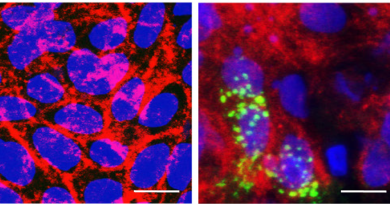Images of the Month: Two or three bristles
Editor’s Note: The fruit fly or Drosophila melanogaster has long been an important model organism, enabling the study of the nervous system, genetics and other fundamental biological processes. Stern was an early fly researcher. The following paragraph is the opening statement of a presentation at the Sigma Xi National Lectureship. It first appeared in the American Scientist, Vol. 42, No. 2 (APRIL 1954), pp. 212-247.
The photos in the slideshow were taken by Dr. Shinya Yamamoto, a postdoctoral associate in the laboratory of Dr. Hugo Bellen at the Jan and Dan Duncan Neurological Research Institute at Texas Children’s Hospital and the department of molecular and human genetics at Baylor College of Medicine. They mirror the amazing diversity and beauty of this insect.
Each month, From the Labs at Baylor College of Medicine spotlights an image or images taken by scientists at the College. To submit an image, send it to Ruth SoRelle at dsorelle@bcm.edu or call at 713-798-7959.
Two or three bristles
By Curt Stern
For more than 25 years I have looked at the little fruit fly Drosophila and each time I find fresh delight. When I see Drosophila under moderate magnification of a binocular microscope I marvel at the clear cut form of the head with giant red eyes, the antennae, and elaborate mouth parts; at the arch of the sturdy thorax bearing a pair of beautifully iridescent, transparent wings and three pairs of legs; at the design of the simple abdomen composed of a series of ringlike segments. A shining, waxed armor of chitin entirely covers the body of the insect. In some regions this armor is bare, but in other regions there arise short or long outgrowths, the bristles, strong and wide at the base and gently tapering off to a fine point. Narrow grooves, as in fluted columns with a slightly baroque twist, extend along their lengths. A short stalk fits each bristle into a round socket within the body armor so that the bristle can be moved within this articulation.



